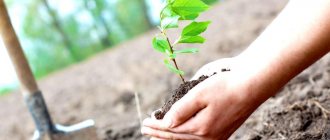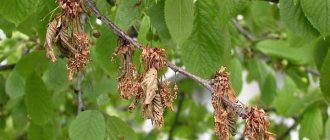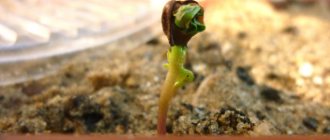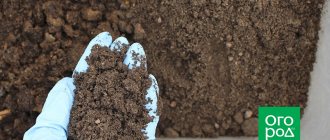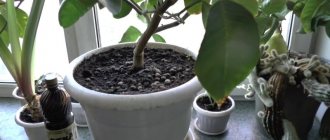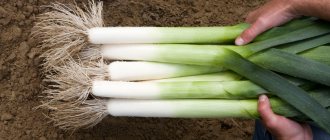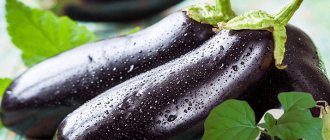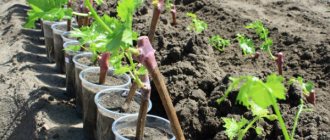Features of apricot seed propagation
Growing an apricot from a seed will definitely lead to a harvest, and this will happen in 5–6 years. But, firstly, it will be a couple of years later than when buying a ready-made seedling and, secondly, if cuttings of the desired variety are not grafted onto the grown seedlings, it is not at all a fact that it will bear fruit with the same apricots as the one from which the seed was taken.
In any case, to grow apricots in this way, you should take seeds only from fruits of local, regionalized varieties.
Despite the fact that many gardeners are dubious about the idea of growing apricots from seeds, they do not argue that the resulting trees, if done correctly, will be more unpretentious. Well, of course, there is a plus in that you can plant at least a dozen seeds (they will most likely be received as a free supplement to the purchased fruits!), and then from the resulting seedlings you can select the best specimens for planting in a permanent place.
Seeds are waste material, and seedlings will be almost free
Unlike the more familiar apple and pear trees, the risk of getting a completely wild apricot from the seed is minimal. Perhaps it will produce even better fruit than the mother tree. But it is impossible to predict this in advance, so rootstocks are most often grown from the seeds, and then apricots of the desired varieties are grafted onto them.
Which seeds to take for germination?
The best material for seed propagation of apricots will be the seeds of zoned varieties adapted to a specific climate. For example, in the south of Russia, the Manchurian apricot will not reveal its qualities, and in Siberia, southern varieties and hybrid forms are doomed to death or poor fruiting.
Algorithm for choosing planting material:
- select seeds of large fruits in full ripeness;
- fruits from sick, poorly growing trees that are not ripe (in technical ripeness) are rejected;
- Do not use apricots damaged by pests.
To check if the seeds are suitable for planting, place a few in a container of water. Unusable ones - hollow inside, damaged by pests or diseases - will float. Healthy ones suitable for germination will sink to the bottom.
Preparing apricot seeds for planting
You can plant apricot kernels almost at any time, but a distinction is made between sowing directly in open ground and in pots (that is, at home). At home they are usually planted in the spring. They try to select pits from large apricots, without damage, but the main thing is that they are completely ripe, even overripe: the pit should be completely easily separated from the pulp.
As for the variety, if in the southern regions you can plant seeds from any fruit, then in the middle zone and more northern regions the most cold-resistant varieties are optimal, for example, Northern Triumph, Saratov Ruby, Favorit, Alyosha.
Northern Triumph is one of the most frost-resistant apricots
After separating the seeds, they are washed well and filled with warm water: already at this stage you can discard the weakest ones. Then they are disinfected by holding them for 15–20 minutes in a pink solution of potassium permanganate, after which they are soaked for a week, changing the water daily. The most important stage in the preparation of seeds is stratification. In nature, it occurs naturally: once in the soil, the seeds spend the entire winter in the cold.
Selecting a seed and preparing for planting in a pot
Choose a healthy, strong and productive tree, take slightly overripe apricots from it, the pulp should be easily separated.
Choose the most ripe apricot, maybe even one that has fallen from the tree and is rotten
Remove the seeds, wash them and test them for quality. Place them in a bowl of water and discard the ones that float, they are empty and will not sprout. Dry the remaining ones in a dark place. After a month, repeat the test; the seed inside the seed may dry out and become unsuitable for planting. Since not all seeds can germinate, select at least 20 seeds to get 3-5 strong and healthy plants.
Apricot kernels are used in cosmetology, cooking, medicine, pharmacological and perfume industries. Apricot oil is an excellent moisturizer and can replace creams. The high content of vitamin B17 has an antitumor effect.
For full development, apricots require seasonal temperature changes. To prepare the stone for low winter temperatures, it will be necessary to carry out artificial stratification lasting 80–100 days. Try to determine in advance whether it will be possible to plant the seeds in the ground when the cold treatment is over? If your region has an early and warm spring, then after stratification the seeds can be planted in the ground.
If the weather in your area is unpredictable or warm days do not come, then first plant the seeds in pots. Place drainage at the bottom of the pot, then a small layer of humus and fertile soil. Keep the plant in the cold (0–5 degrees). After germination, the seedlings are placed in a cool, sunny place and watered as the soil dries.
You can plant several seeds at once in one pot, some of them will not sprout, and from the rest you can select the largest ones and plant them in separate containers
If you decide to leave the seedling to grow in a pot at home for the first year, it will be useful to feed it with organic fertilizers in a very small dose to avoid burning the roots. In the fall, be sure to send your potted seedling to a cold place for the winter and leave it there until spring.
Growing an apricot seedling from a seed at home
Most experts assure that growing seedlings at home is not the best approach; it is safer to sow the seeds directly into open ground: homemade seedlings turn out to be too pampered. But if this is not possible, you need to prepare the pots and soil by spring and plant the seeds that have been in the refrigerator for the winter. This is usually done in the second half of March.
Since the taproot of apricots quickly goes deep, the pots must be deep. Actually, it is enough for each bone to take a one and a half liter plastic bottle and cut it off at the narrowing point, and be sure to make drainage holes in the bottom. A two-centimeter layer of expanded clay or small pebbles is placed at the bottom of the bottle; the top is filled with fertile soil. This can be any universal soil for seedlings.
Try proven apricot varieties from a reputable supplier:

